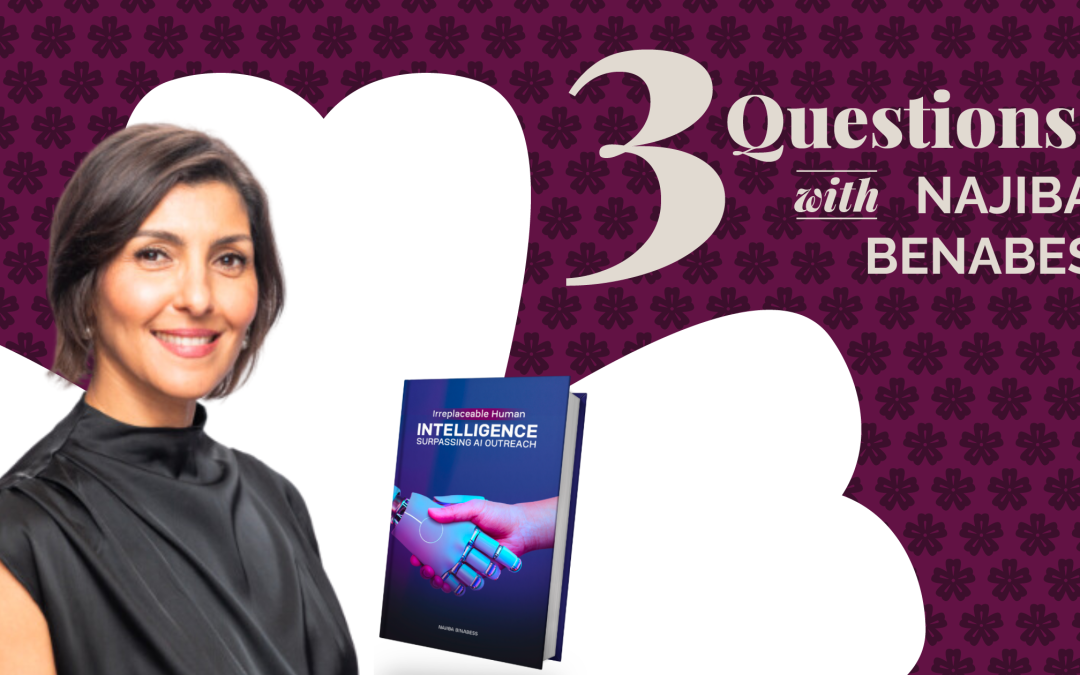This month we asked Najiba Benabess, Academic Dean of the Elizabethtown College School of Business, about her book Irreplaceable Human Intelligence: Surpassing AI Outreach:
Q: What do you think the public perception of AI is? Is there a specific misconception about AI that motivated your research?
Perception: Public perception often centers on AI’s potential to replace jobs, fostering concerns about unemployment. This perception is fueled by the rapid advancements in AI technologies, automation, and machine learning, which are often portrayed in the media as transformative forces in the job market. As AI systems become increasingly sophisticated, there is a prevailing belief that they may outperform humans in various tasks, contributing to the fear that automation could lead to substantial job displacement across multiple industries.
This perception has significant implications for societal attitudes towards AI adoption. The concern about job displacement may influence public opinion, corporate decision-making, and even government policies regarding the integration of AI into various sectors. Addressing this perception involves not only acknowledging the potential impact of AI on employment but also emphasizing the opportunities for collaboration between humans and AI to create more efficient and innovative work environments.
Misconception: The prevalent misconception that AI might entirely replace human roles served as a driving force for my book.
The widespread misconception that AI has the capability to completely replace human roles has been a pivotal motivator for my research endeavors. This misconception stems from a combination of factors, including media portrayals, limited understanding of AI capabilities, and the extrapolation of isolated instances where automation has replaced specific tasks. While it is true that AI can automate certain routine and repetitive tasks, the belief that it can entirely replace the multifaceted skills and cognitive abilities of humans is a misinterpretation.
This misconception is a significant barrier to the responsible development and adoption of AI technologies. It underscores the importance of clarifying the role of AI as a tool to augment human capabilities rather than a wholesale substitute for human labor. Addressing this misconception requires educational efforts to enhance public understanding of AI’s capabilities and limitations, emphasizing the collaborative potential between AI and human workers. By dispelling this misconception, we can foster a more informed and constructive dialogue around the responsible integration of AI into various aspects of society.
Q: What was your first encounter with AI?
My initial exposure to AI occurred through a chat GPT. It facilitated the rapid generation of a comprehensive report draft, allowing me to allocate more time and energy towards the critical aspects of personalization and refinement.
The AI’s capacity to swiftly produce a coherent draft demonstrated the potential for collaboration between humans and AI. Rather than replacing the creative and analytical aspects of the task, the AI tool became a valuable assistant, streamlining the initial stages of the report creation process. This encounter highlighted the synergistic relationship between human expertise and AI capabilities, showcasing how AI can be harnessed as a tool to enhance productivity and efficiency in complex tasks.
This experience fueled my interest in exploring the responsible and innovative integration of AI in various domains. It underscored the importance of understanding AI not as a substitute for human intelligence but as a supportive tool that can augment and amplify our abilities, ultimately leading to more effective and impactful outcomes.
Q: What do you anticipate from AI in the next ten years?
Looking ahead to the next decade, I foresee artificial intelligence (AI) evolving to achieve even greater levels of speed and efficiency in various applications. The technological advancements in AI are expected to be substantial, streamlining processes and enhancing problem-solving capabilities. However, amidst this progress, I firmly believe that the distinctive human capacity for providing direction and nuanced understanding will remain indispensable. While AI excels in tasks that require rapid computation and data analysis, the human touch is irreplaceable when it comes to complex decision-making, empathy, and contextual understanding. The synergy between AI’s computational prowess and human cognitive abilities holds the key to unlocking innovative solutions and addressing intricate challenges, marking a future where collaboration between AI and human intelligence becomes increasingly integral to achieving optimal outcomes across diverse fields.
Q: Today, where does human intelligence and empathy stand in relation to AI in the professional world?
Presently, human intelligence and empathy play pivotal roles in the professional realm, domains where artificial intelligence (AI) struggles to match the depth of understanding and emotional nuances. While AI excels in data analysis, pattern recognition, and repetitive tasks, it falls short in capturing the intricacies of human emotions, interpersonal dynamics, and the contextual subtleties that define complex situations. In professional settings, the ability to comprehend and navigate these nuances is crucial for effective communication, decision-making, and relationship-building. Human intelligence brings a level of intuition, creativity, and adaptability that remains unparalleled, allowing individuals to navigate the unpredictable and dynamic nature of various professional environments. As we stand at the intersection of human expertise and AI capabilities, recognizing and leveraging the complementary strengths of both is essential to harnessing the full spectrum of potential in the evolving landscape of work and collaboration.
Q: How can professionals deal with AI?
Professionals can effectively engage with AI by:
- Embracing collaboration: Integrating AI as a complementary tool to amplify productivity.
- Continuous learning: Remaining abreast of evolving AI technologies to adapt and enhance professional skills.
- Leveraging uniquely human qualities: Prioritizing and refining skills such as creativity, emotional intelligence, and critical thinking, which constitute distinct strengths compared to AI capabilities.
Visit www.wibenetwork.com for more information on Women in BizEd.

